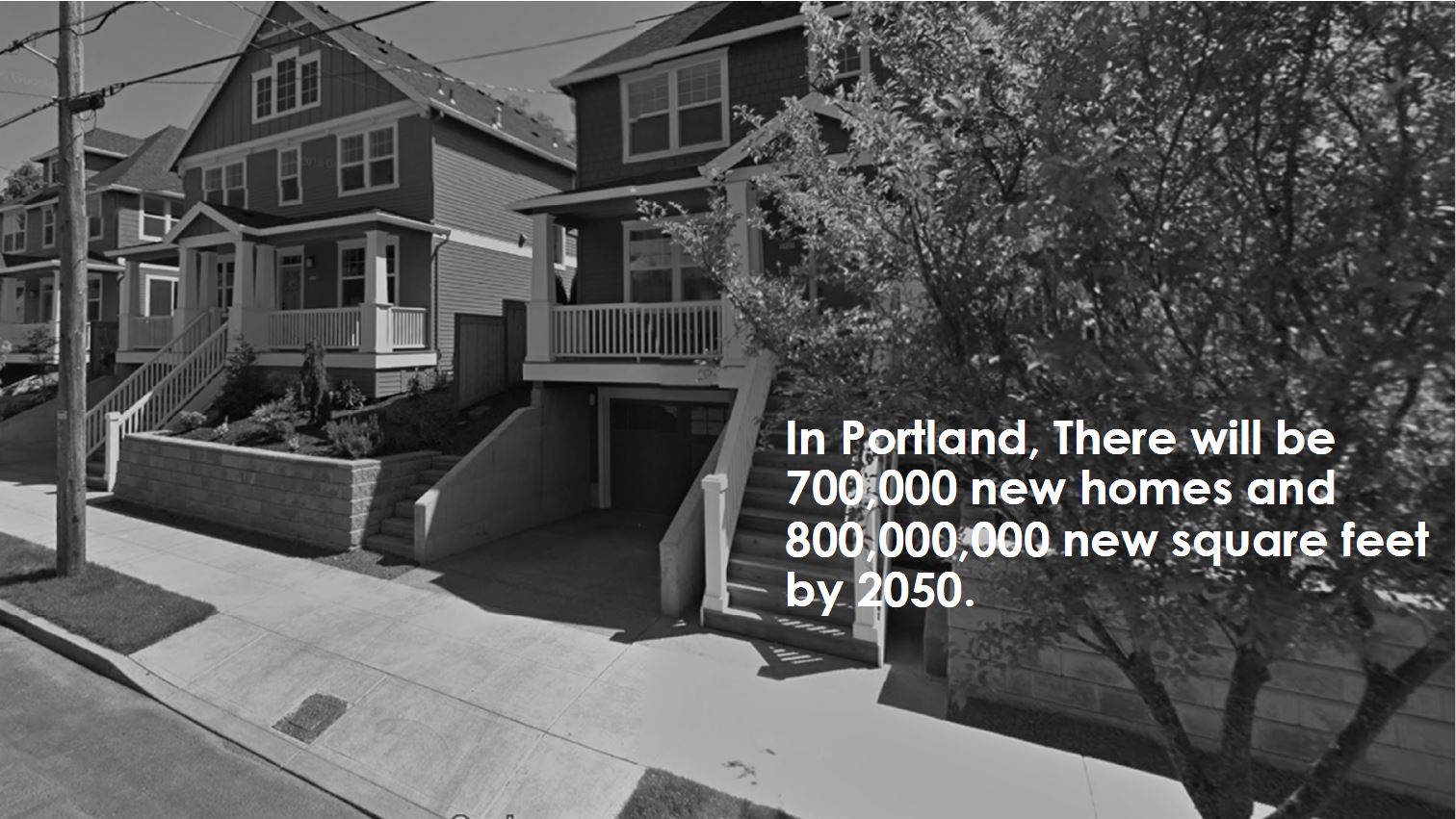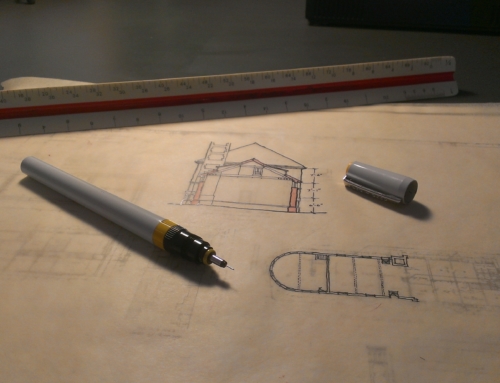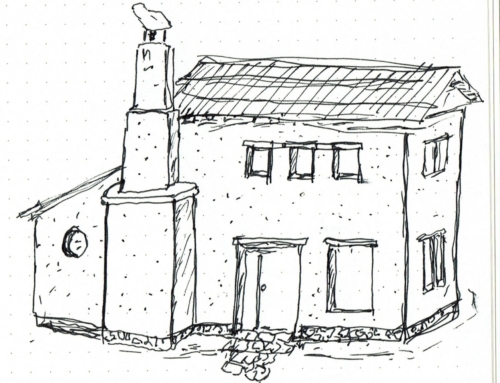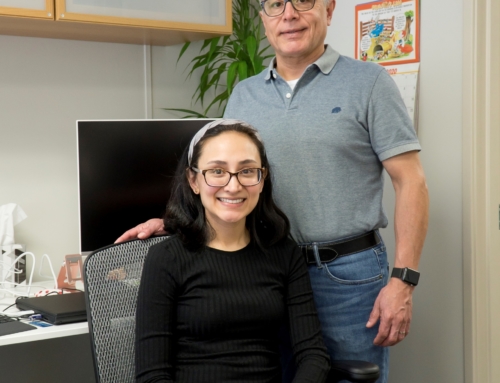Written by Crystal Glanz-Kreutz
In October 2019, I was able to attend an event at the AIA of Portland called: “Making the Financial Case for Net Zero”. The event was a part of Sustainable Building Week 2019 and featured a number of speakers, each experts in their fields. It’s always difficult to succinctly summarize events like these, because there is just so much information given and everyone has different things that they feel more drawn to or that are bigger priorities to them. That being said, I’ll do my best to share my thoughts and what I learned from this talk.
The first speaker was Matt Hyder, an Energy Consultant at RWDI. Matt began by discussing how buildings that are constructed today will be in use as we begin to experience more and more effects of climate change in the next 50+ years. He spoke of mitigation methods, the Energy Code, Net Zero, and Conservation. He suggested planning ahead, we need to adapt to/ prepare for the changing climate zones. For instance, Portland is currently a 4C climate (Mixed Marine) but 50 years from now, it will be a 3A climate (Warm Humid) – as a reference point, Atlanta, GA and Dallas, TX are both 3A climates now. For the purposes of this study, Matt and his team ran scenarios of the Kellogg School project, and did a model comparison. Option one: Build a High Performance Passive system. Option two: Build a High Performance Active system.
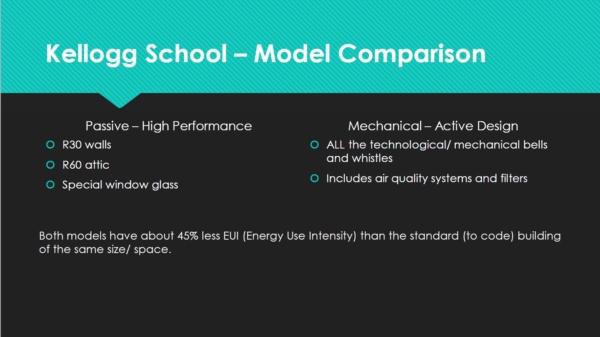
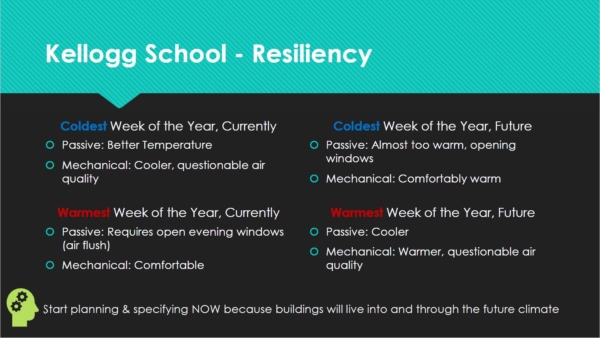
I interpreted this data as to say, you don’t need to spend large amounts on all of the bells and whistles of a high tech mechanical system. A well done passive building can be just as (if not more) effective in heating and cooling. All buildings require the basics of walls, windows and insulation. By choosing high quality and high performance versions of these pieces, the client will save on energy and operating costs in the long term – for the life of the structure.
The next speaker was Nicole Holt of SERA Architects, she volunteers with Zero Energy Ready Oregon. Zero Energy Ready Oregon (ZERO) is comprised of volunteers from 32 organizations, and was created in response to Executive Order 17-20, which has energy efficiency standard requirements to be in place by 2023. ZERO creates educational and communication tool kits, makes Policy and Energy Code recommendations, and works on Zero Energy design funding.
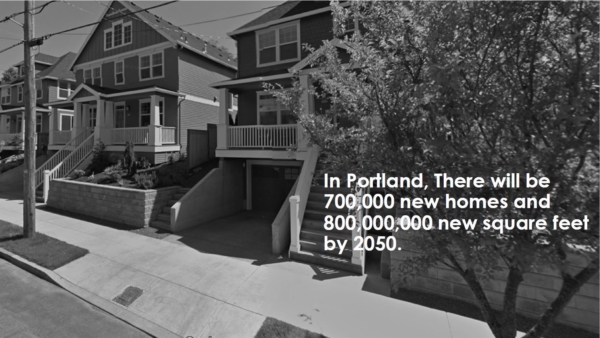
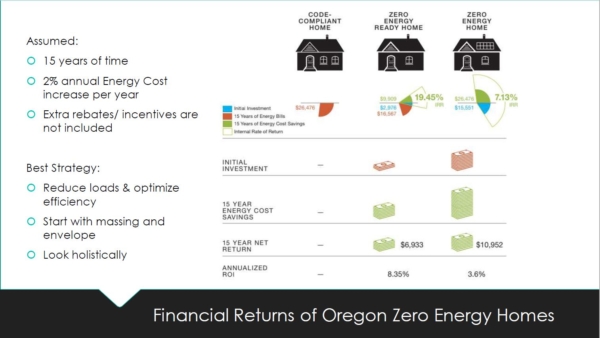
The numbers are pretty compelling. Clearly, if you have a Zero Energy home, you may feel like you’re spending a lot upfront, but that initial investment will more than pay for itself in cost savings in under 15 years… better yet, it’s not as if the savings expire, the ROI continues on for the life of the home. Note: Zero Energy Homes are not just new construction, existing homes can be retrofitted to be Net Zero.
Speaking of retrofitting, the next speaker was Kevin Bates, of Sharp Development. Kevin has made quite the splash down in California, taking typical 1960’s warehouse buildings and turning them into energy saving powerhouses.
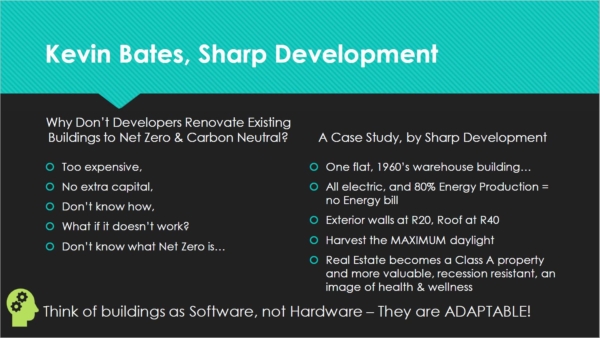
Kevin is a developer and is interested in keeping his costs low and seeing strong ROI. He’s found great success in converting buildings to Net Zero & Carbon Neutral. Kevin advised the group, “Don’t underestimate the value of doing the right thing, for the right reasons, the right way.”
Finally, ML Vidas of Vidas Architecture spoke. To be honest, she didn’t speak much to the financial case of building to Net Zero, but she was inspiring and brought real heart to why we do what we do. ML spoke at length about the Desert Rain House which is a project that she worked on in Bend, OR. The Desert Rain House is Living Building Certified and an excellent case study of what buildings have the potential to do and to be.
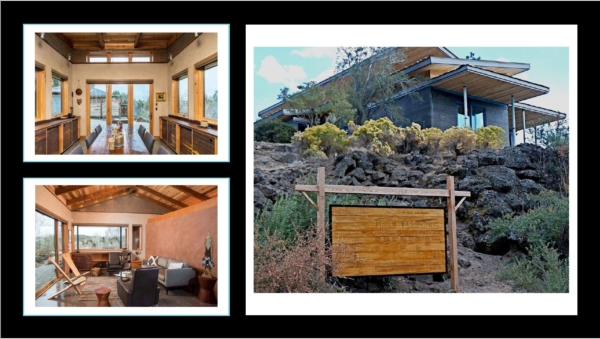
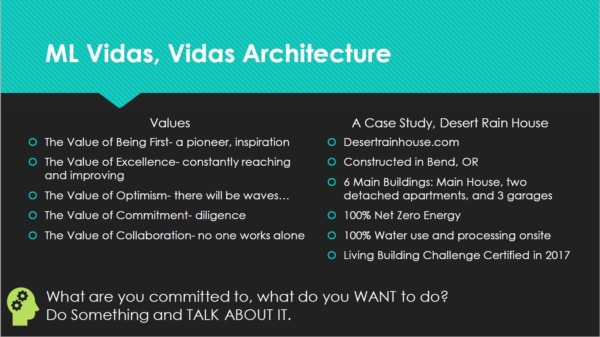
In all, the evening was incredibly informative and inspiring. The speakers were complimentary of one another, each offering their unique perspectives on what it means to build and retrofit Net Zero buildings and why we ought to speak to our clients and peers about this opportunity more often. For every concern about or reason not to build in this way, there’s a logical and compelling reason to build this way. Architecture and the built environment can be very damaging to our ecosystem and to the people who live and work in the spaces that we build. Creating places that respond to the climate and are inviting, comfortable and profitable seems like the best path forward.


